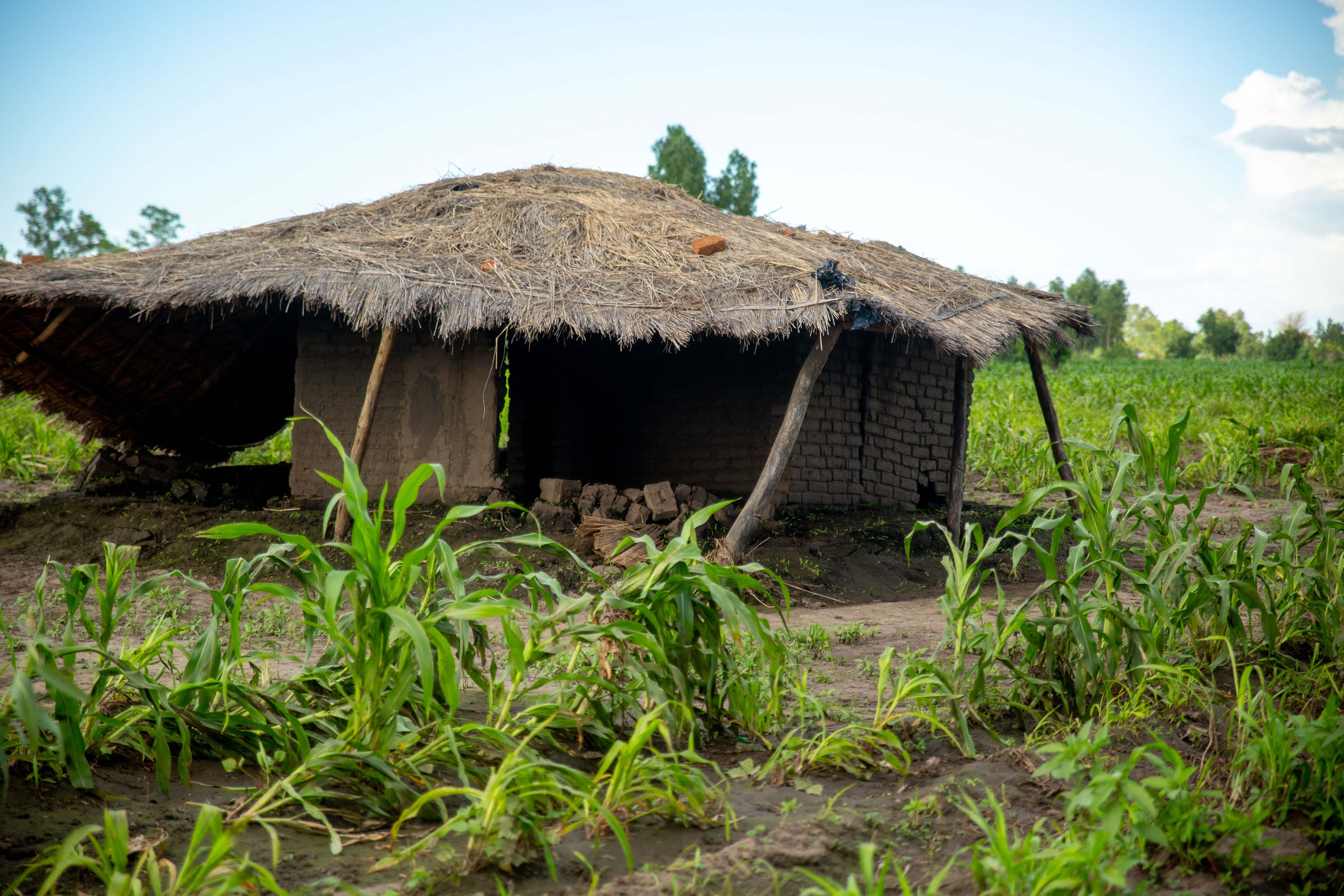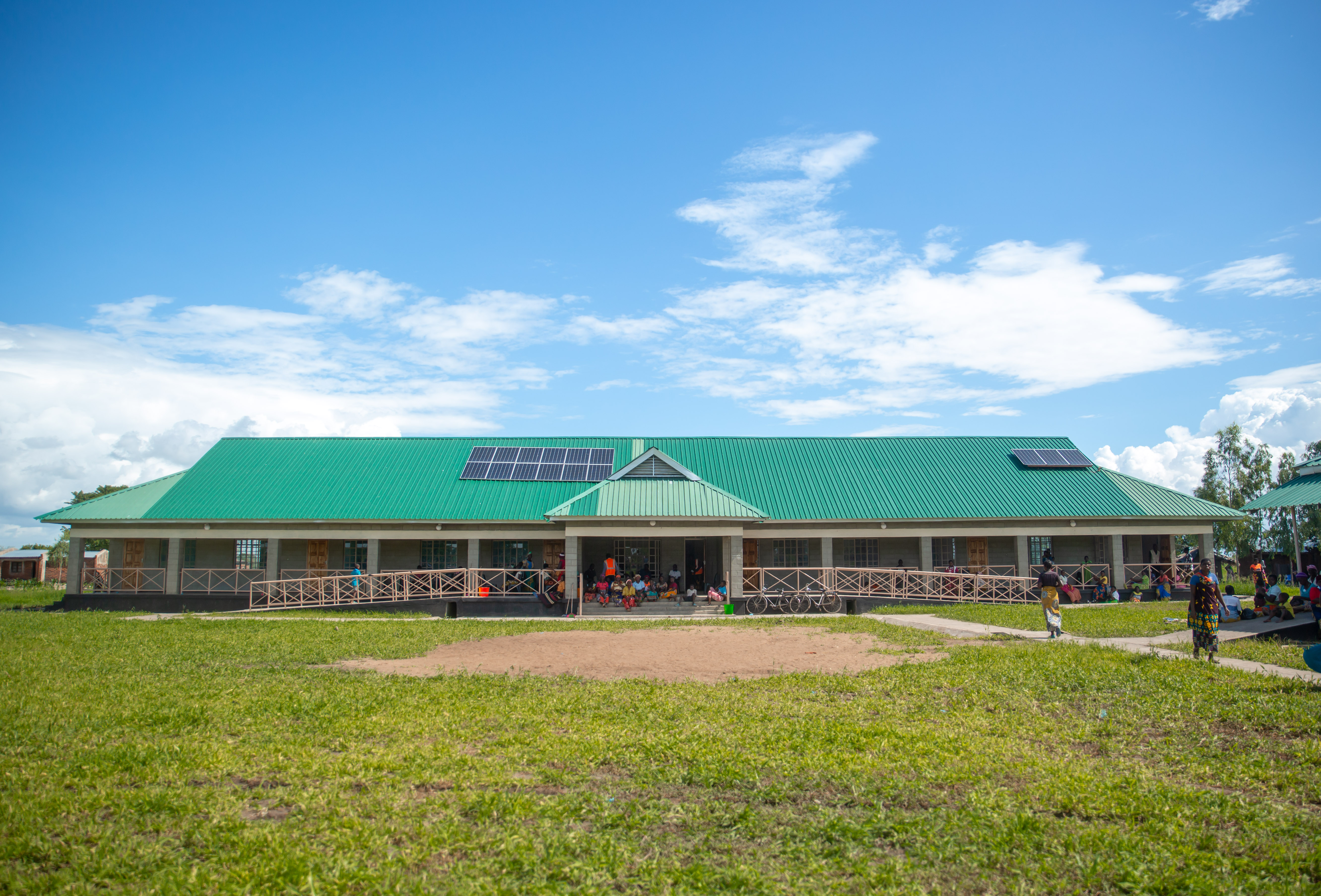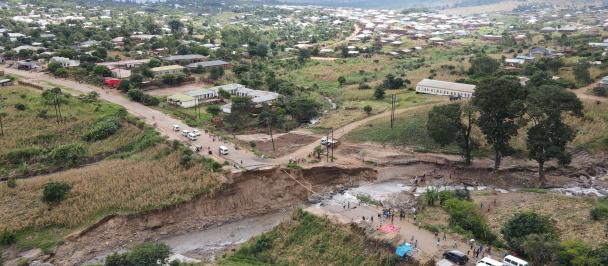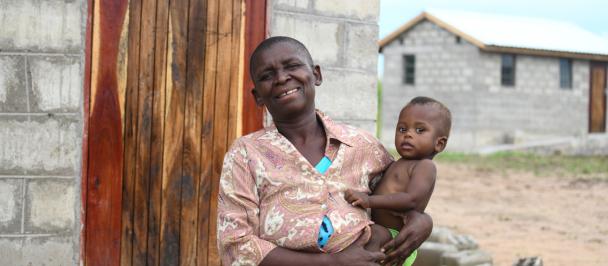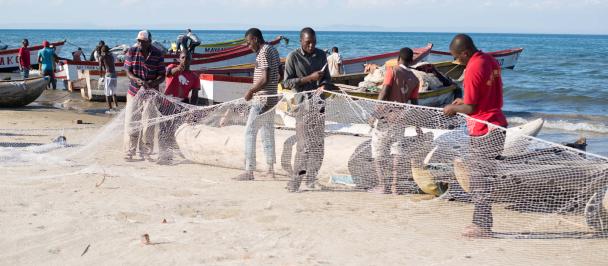One of the damaged houses due to Tropical Storm ANA in Malawi
One of the evacuation centres supported by UNDP
In recent years, Malawi has been experiencing more frequent and intense floods, droughts, strong winds and other extreme weather which endanger communities, agricultural activities and economic infrastructures.
The floods in 2015 affected over one million people, killing over 100 people and displacing some 300,000. The 2019 Cyclone Idai affected more than 865,000 people including more than 86,980 displaced, with 59 deaths and 672 injuries.
On the 24 of January 2022, Malawi experienced yet another disaster when the Tropical Storm Ana struck Madagascar, Mozambique and Malawi, with high winds and torrential rains, leaving at least 80 people dead across the borders.
According to the latest situation report from the Government of Malawi’s Department of Disaster Management Affairs (DODMA), more than 945,727 people have been affected, including close to 100,000 displaced, with 37 deaths and 158 injuries.
Tropical Storm Ana has severely affected communities that were already suffering due to the ongoing rainy season and the effects of Cyclone Idai in 2019.
Lasting solutions to address disaster management
Whilst ongoing efforts are focusing on immediate needs in affected communities, the current situation calls for more investments that will ensure long-lasting impact to minimize the effects of future floods.
UNDP Malawi is currently working with Government, under the Department of Disaster Management Affairs, in providing technical assistance to help strengthen the current coordination efforts and ensure that there are robust recovery mechanisms in place.
To help reduce the threats posed by climate change and natural disasters UNDP Malawi continues to work alongside the Government and other national and local structures, to help build capacity of key actors to improve early warnings and climate information, to enhance the resilience of affected communities.
In its disaster risk management work, UNDP Malawi has invested a complementary US$10 million to promote the resilience of communities, amongst which includes the construction of Evacuation Centres and developing Information Management Systems and Mechanisms aimed at strengthening the humanitarian coordination for timely response to the affected populations.
UNDP has also invested in the Inclusive Recovery Project, with financial support from the Government of Japan and the Government of the People’s Republic of China, aimed at preventing affected communities from slipping back to extreme vulnerability, and to strengthen their resilience by building back better. Through this project, UNDP has constructed a total of 400 Climate resilient houses, rehabilitated damaged infrastructure and provided training to various players on how to build back better.
With support from Green Climate Fund (GCF), UNDP Malawi also invested in 16 million USSD, to help scale up the use of modernized early warning systems and climate information, with lifesaving early warnings, and dissemination of valuable climate information to help save lives, protect livelihoods, and inform decision-making on development plans.
In his remarks, the UNDP Resident Representative, Mr. Shigeki Komatsubara said: “Our goal is to have permanent and sustainable solutions that address the threats posed by natural disasters like Tropical Storm Ana. We are therefore calling for more players and donors to invest in sustainable solutions in addressing natural disasters that helps us protect the significant development gains already made this far”.
With more than half of the 28 districts in Malawi being deemed as disaster prone, working to address the challenges that are inflated by a lack of preparedness, recovery capacity, limited early warning systems and the effects of climate change, is therefore key.

 Locations
Locations